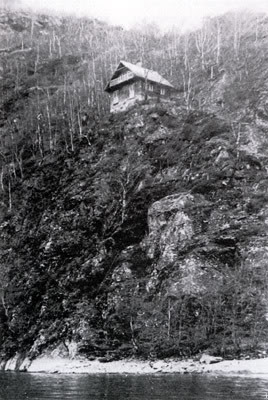The exhibition evidences the practical research work I have undertaken on the nature of specific spaces that philosophers have used in order to think and write. Austrian philosopher Ludwig Wittgenstein’s hut at Skjolden in Norway (constructed between 1914 and 1918) stood as a solitary architectural marker in Wittgenstein’s life as it was the only structure designed and built purposefully for his own personal interests and preoccupations. It was a place for him to experience a union of clarity and entanglement and a rootedness of philosophical thought in everyday life. Subsequently, the site of this unassuming and isolated building has become a place of pilgrimage and myth regarding its occupant. Following Wittgenstein’s death in 1951, the hut was dismantled and removed from the site. What remains is the stone foundation on which the wooden building once stood.
I am trying to conduct you on tours in a certain country. I will try to show that the philosophical difficulties which arise in mathematics as elsewhere arise because we find ourselves in a strange town and do not know our way. So we must learn the topography by going from one place in the town to another, and from there to another, and so on.
Ludwig Wittgenstein, in his lecture on the Foundation of Mathematics (1939)
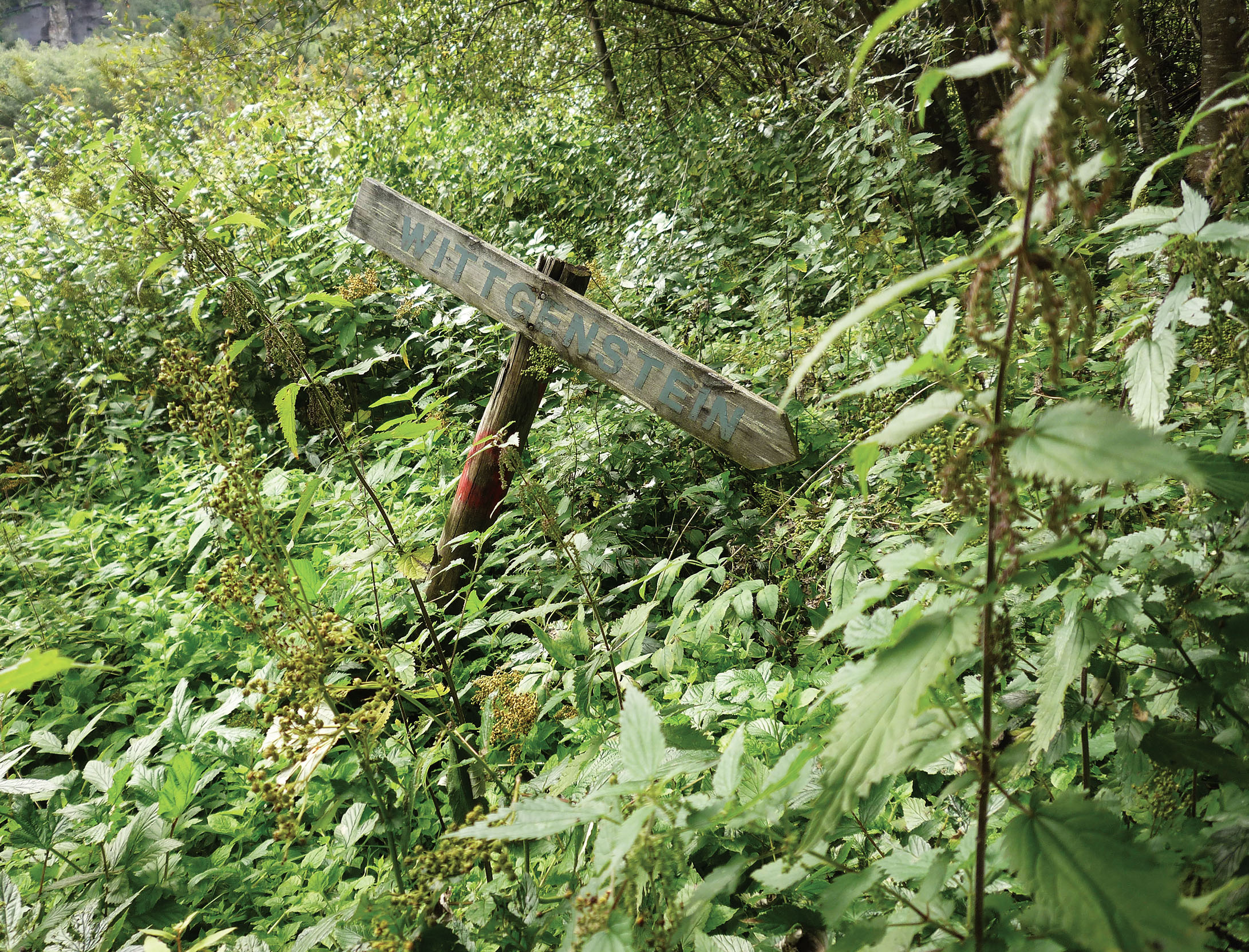
This essay describes a journey: a kind of pilgrimage. It begins with a walk across a landscape to a site that has not been occupied for more than fifty years; a place where a man came to be solitary and to think.1 As I begin this journey, I am reminded of Christopher Tilley’s remark in his book, A Phenomenology of Landscape:-
A landscape is a series of named locales, a set of relational places linked by paths, movements and narratives. It is a ‘natural’ topography perspectivally linked to the existential Being of the body in societal space. It is a cultural code for living, and anonymous ‘text’ to be read and interpreted, a writing pad for inscription, a scape for human praxis, a mode of dwelling and a mode of experiencing (Tilley, 34).
The text that follows is a kind of journey on which I have set myself the task of reimagining Wittgenstein’s hut at Skjolden. I will attempt to trace and record the routes that will culminate in this reimagination. It will be an experiential and phenomenological process of walking, thinking and interpreting in the spirit of Wittgenstein’s insight that ‘when one sketch is placed alongside another the beholder becomes capable of seeing connections that are only potentially present in individual ones. Notice, however, that these connections do not determine the only way of looking at the landscape, just one of many possible ones that renders the characteristic traits of it’ (Wittgenstein in Larsen, Johannessen & Amas, 223-224).
Writer Robert Macfarlane notes that ‘for Wittgenstein, following lines of enquiry on foot as well as in the mind was integral to his philosophy (...) in 1913 Wittgenstein was attracted to Skjolden (...) and spent a long dark winter there, contemplating logic and walking the paths that bordered the fjord and led up into the mountains. The landscape – ascetic, decisive – matched the thinking he undertook and in the course of that winter he solved a major philosophical crux concerning the symbolism of truth functions...’ (Macfarlane, 29).
The word Wittgenstein used for ‘thought’ in this context was Denkbewegungen which variously translates as ‘thought movements’, ‘thought-ways’ or ‘paths of thought’: ideas thathave been brought into being by means of motion along a path. In the preface to Philosophical Investigations (2009), Wittgenstein argued that:
The best that I could write would never be more than philosophical remarks; my thoughts soon grew feeble if I tried to force them along a single track against their natural inclination. And this was of course connected with the very nature of the investigation. For it compels us to travel criss-cross in every direction over a wide field of thought. The philosophical remarks in this book are, as it were, a number of sketches of landscapes which were made in these long meandering journeys (Wittgenstein, 3).
However, paths are not just for the solitary walker. They are shared experiences; as communal processes and are always open to other walkers, other interpretations and discourses.
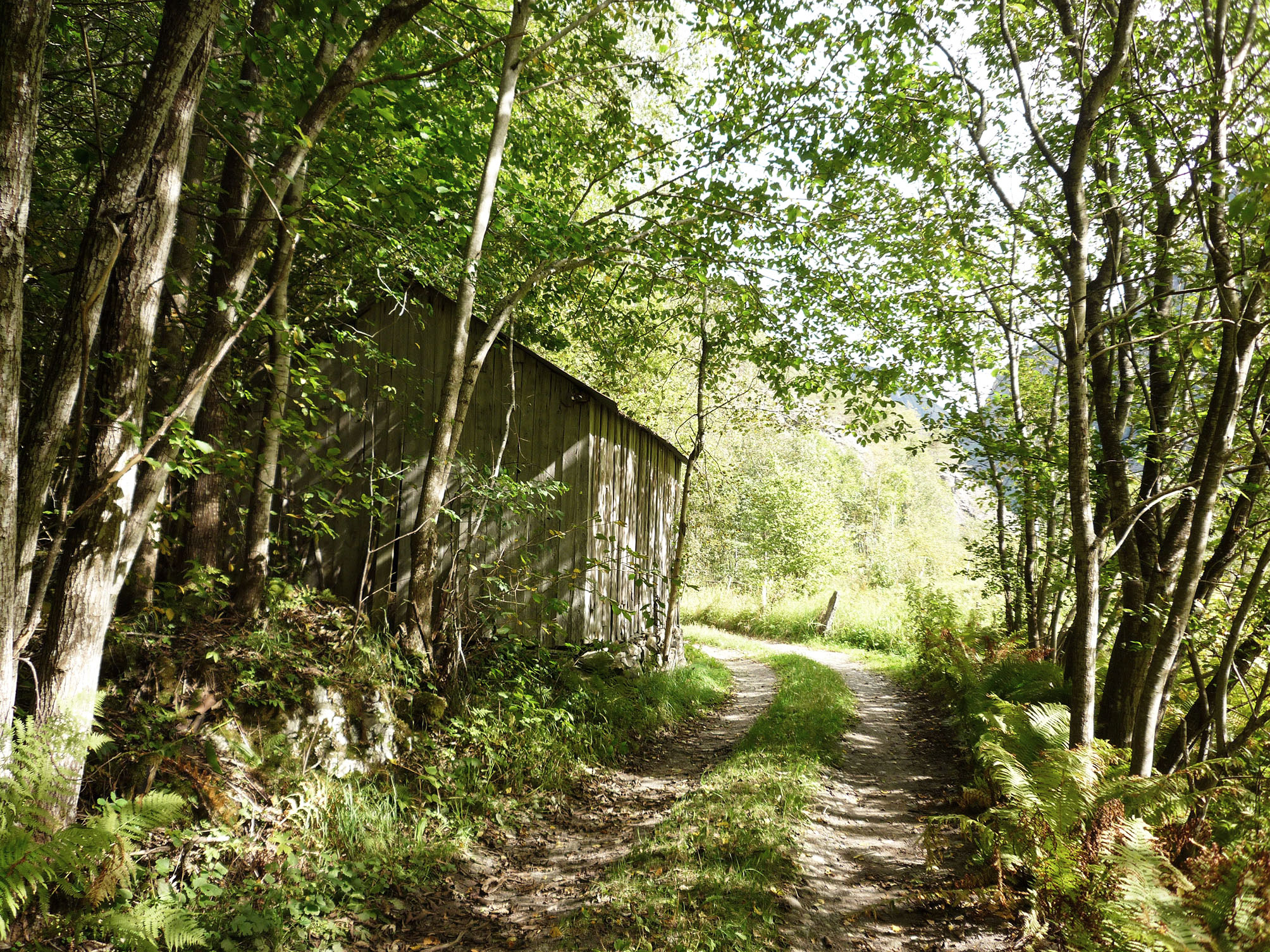
My walk begins at the end of a six hour drive from Bergen to the Vassbakken campsite (approximately 3 km east from Skjolden). I begin by unfolding and scrutinising artist and writer Jan Estap’s map from her project Searching for Ludwig Wittgenstein (2007) and thinking about her essay, ‘Showing the Way Out of the Fly Bottle: Searching for Wittgenstein in Norway’ (2008). Whilst Estap’s map is still a sketch, it is certainly more comprehensive than the map I used on an earlier journey - my first visit to Heidegger’s hut at Todtnauberg in 2008 (how could it be less?).2
The signs are good. The board at the roadside is also encouraging. It describes the walk and gives a timescale of 45 minutes. I head north towards the mountains and cross the bridge over the River Fortun before coming across my first visual marker; a sign enscribed with the word ‘Wittgenstein’ accompanied by a pictographic representation of a trekker and and arrow pointing to my left along a car wide track. I am reminded here that Wittgenstein states in Philosophical Investigations that ‘a ‘signpost’ has a guiding function. It is not coercive. Its guiding function rests upon a custom which establishes a practice for its use – ‘a rule stands there like a signpost’ (Wittgenstein, 85). I am following ‘a rule’ of the walk. The path is indicated by signs marked with a red circle and on two occasions by Wittgenstein’s name and an arrow. Initially, the walk follows farm tracks across the river and fields passing a number of scattered farm buildings before entering woods at the edge of Lake Eidsvatnet.

In October 1913, Wittgenstein left Cambridge and his studies with Bertrand Russell, and retreated to Skjolden; a small village situated at the end of the Lusterfjord, to spend the winter thinking, writing and walking the paths bordering Lake Eidsvatnet. Wittgenstein had first visited the village in the summer of 1913. He returned later that year to make an extended stay and resided in the village as a guest of the local postmaster. The following year, he commissioned local builders to begin building a hut overlooking the lake on the north side and about a mile from the village. Ivar Oxaal explains:-
(...)Wittgenstein planned to build a hut and, like transcendentalist theorist Henry Thoreau, to live alone and meditate...The local builders began working on the hut in the spring...there are no details about Wittgenstein’s involvement in the design or its construction...Wittgenstein’s hut was built on the lower slopes of a mountain, but with a magnificent view (Oxaal, 111).
Oxaal questions Wittgenstein’s motivation for siting the hut overlooking the lake. He asks: ‘... was this fabulous view just an ego trip for a wealthy foreign tourist or was it a hideaway form the persistent anti-Semitism in Vienna? The site is a contradiction: if the point was to have a solitary life, it seems highly inappropriate – the hut, with its highly prominent location, was near the village, and the road from Skjolden to Lom was nearby...’(Oxaal, 150). Wittgenstein was unable to oversee the completion of the building and was only able to return to Skjolden sometime after the end of World War One. In his biography of Wittgenstein, Ray Monk notes that the philosopher was kept informed by letter of progress on the building by the postmaster. He reported that:-
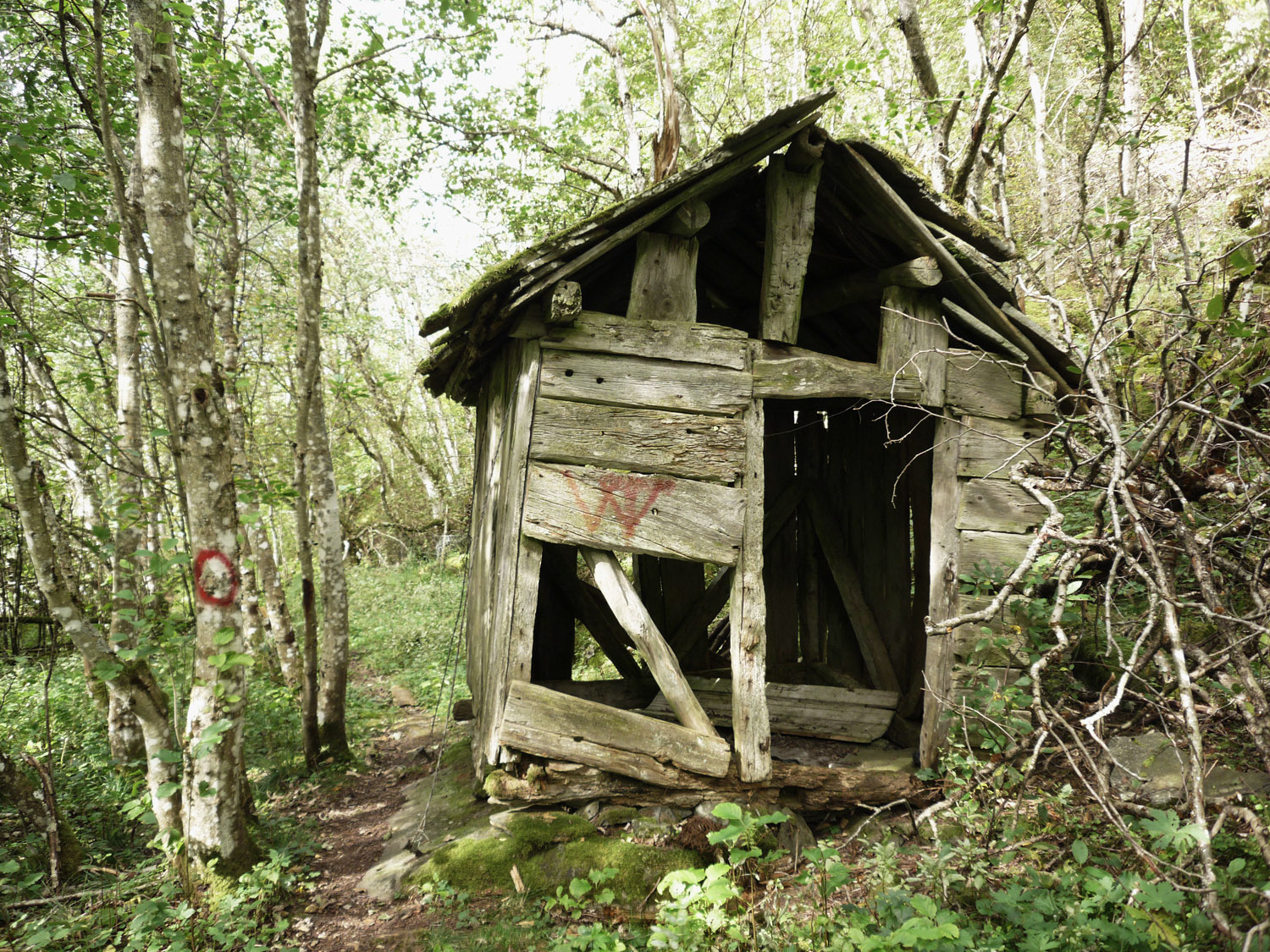
The news from Norway was that work on his hut had been completed. ‘We all hope’ wrote Klingenburg ‘that you will soon be able to return to your new home, which is now finished. Wittgenstein paid the workers via another Skjolden resident, who was surprised to be sent the money; he had not expected Wittgenstein to pay, he wrote until his return (Monk, 125).
Whether or not the hut was based on an architectural drawing is uncertain and it is likely that the carpenter responsible built it without a formal plan. Wittgenstein’s stays at the hut from 1921 until his death in 1951 were intermittent. It was never a permanent residence for him but operated as a bolt-hole from both his professional and personal lives; teaching in Cambridge and family in Vienna. in his book, Mysticism and Architecture Roger Paden comments that the hut was (...) constructed in the local style appropriate to cold temperatures and heavy snowfall (...) Visitors from England found it spartan at best, but they were nevertheless impressed with its ingenious details. Its most important feature from Wittgenstein’s perspective, however was its location, which was sufficiently isolated to enable hime to get some work done’ (Paden, 17).
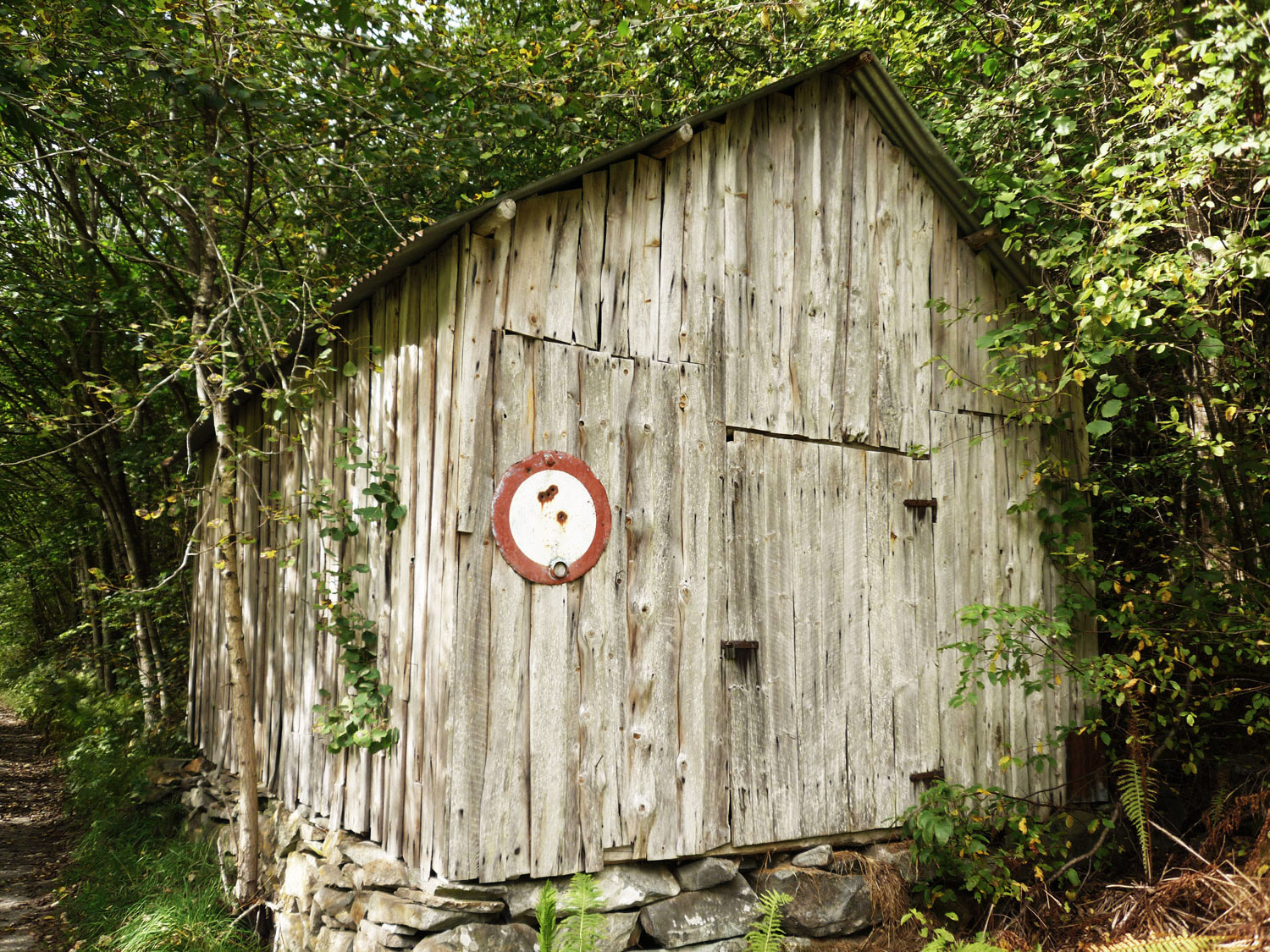
I have crossed farmland and passed several wooden buildings. At this point in the walk there are two markers; a small board on a post with the (now familiar) red circle marked on it on the right and a second, on the left- hand side of the path inscribed with the word ‘Wittgenstein’ and an arrow which has fallen over slightly and is obscured by nettles. The path passes into woodland. There is a delapidated hut to the right of the path with a noticable marker (a red painted ‘w’), the path skirts the northern edge of the lake heading west. It is at this point that the terrain begins to change.
The path climbs across rocks of varying sizes and drops amongst the trees that edge the lake. I speculate that the builders of Wittgenstein’s hut must have begun by constructing a path to the site. Perhaps this path?
In 1936 Wittgenstein travelled again to Skjolden for an extended stay. The following year he invited his friend (and possible his lover) Francis Skinner to join him there from Cambridge. Monk records from Skinner’s letters to Wittgenstein, elements of the domestic activities they undertook in the hut in this period. Specifically, he describes an occasion when both determined to clean the floor of Wittgenstein’s room by spreading wet tea-leaves to soak up the dirt before sweeping them up.
Historically it seems that the hut was accessed by boat across Lake Eidsvatnet. Wittgenstein was supplied during his stays there with provisions from the local village by boat from acroos the lake and a pulley system up to the hut. The philosopher also rowed across the lake in all weathers to reach the village for company and to retrieve his post. In his biography of Wittgenstein, (Wittgenstein: The Duty of Genius), Ray Monk states that: ‘Wittgenstein sent Moore (philosopher G.E. Moore) a map, showing his hut in relation to the fjord, the neighbouring mountains and the nearest village. The point was to illustrate that it was impossible for him to get to the village without rowing’ (Monk, 363).
Wittgenstein returned to the hut in the first week of October 1950 with his friend Ben Richards. On arrival, Richards was struck down with bronchitis and had to be moved from the hut to a nursing home further up the fjord to recuperate. Both Wittgenstein and Richards then moved to into Skjolden for the remainder of their stay. On returning to England, Wittgenstein made tentative plans to return to Skjolden again on his own but his own ill-health and untimely death in 1951, thwarted him and he never returned to Norway. In the aftermath of Wittgenstein’s death in 1951, the hut remained unoccupied and in the possession of a local man until it was finally dismantled and its fragments relocated to Skjolden in 1957.
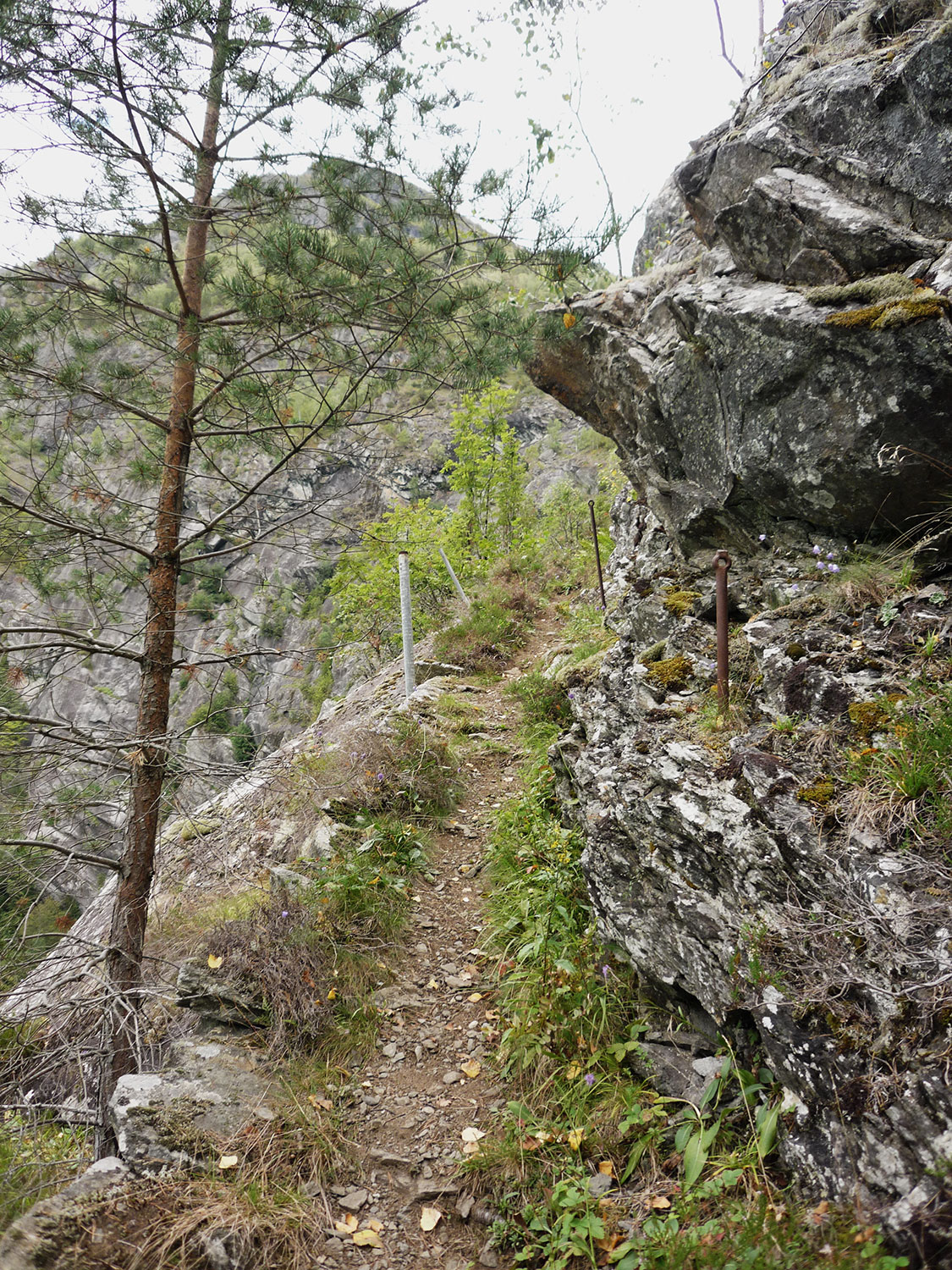
The path through the trees is generally well marked (although a number of the markers on stones have been obliterated by moss and lichen). At one point I miss an important marker (I tell myself later that I am focused on where I put my feet amongst the rocky terrain) and take a path onwards along the lakeside heading north. The terrain becomes increasingly tough before the path disintegrates completely. I look up to see the remains of what must be the pulley system that Wittgenstein designed to bring supplies to him without him needing to have direct contact with people.
For one mad moment I seriously consider this to be the way up and try to progress upwards. It is far too difficult and I abort my attempt to climb and retrace my steps hoping to find a marker that I must have missed. As I reach the point at which the lakeside turns east, I look to my left and see a marker (a red ‘w’ in a red circle) on a stone that indicates a steep path heading slightly to the north east. My relief is palpable and I begin to scale the path swiftly, looking ahead to see an additional marker and a supplementary red ‘t’ which indicates a sharp turn to the left (heading north west) and the continuation of the climb. As I ascend, the lake is visible through the broken treee line to the left (as is the steepness of the drop to the lake edge). Several metal posts appear on the right hand side under an overhanging rock face before a flagpole emerges mounted at the top edge of a steeply inclined rock. A limp flag hints at Wittgenstein’s origins and alerts me to the fact that I have reached ‘Austria’.
A little further and the stone foundation that is all that remains of the hut emerges at the top of the incline. The path then veers to the right of the foundations and levels out where there is a noticeboard and a seat mounted on the corner of the foundations. As I turn and look west across the foundations, I am confronted by the view which takes in the lake and the village of Skjolden framed by the mountains beyond.

The hut stood as a solitary architectural marker in Wittgenstein’s life as it was the only structure designed and built purposefully for his own personal interests and preoccupations. The wooden structure was markedly different from the other significant architectural project with which Wittgenstein was involved– the Modernist Palais Stonborough in Kundmanngasse, Vienna. The building at Skjolden had a simple steep pitched roof for shedding heavy winter snow, a couple of small windows on either side. Overall, this reflected the traditional local vernacular language of Norwegian coastal building but also made reference to Wittgenstein’s background by adopting stylistic tropes akin to the traditional Austrian chalet- a second floor and a balcony overlooking the lake, for example. It could be argued that the hut’s style expressed what Wittgenstein proposed was missing from philosophical study at the time; a necessary rootedness in the fabric of everyday life.
The parallels with German philosopher, Martin Heidegger are worth noting here. Both Wittgenstein and Heidegger were born in 1889. Both looked to a locate the place of philosophical thought ‘outside’ of the rarefied landscape of European academia to something rooted in everyday experience; thinking as part of a community.
Ray Monk’s biography of Wittgenstein hints at aspects of the interior spaces and furnishings but there are no illustrations and little clarity or detail of what it might have looked like. Wittgenstein’s occupation is identified by his recorded presence on notable occasions from 1921 until 1950, the reports of invited and the local inhabitants catching sight of him striding up and down the lake-facing balcony from the far side of the water.3
As of 2014, what remains of Wittgenstein’s hut at Skjolden is a stone foundation at the lakeside and the remnants of the dismantled wooden structure in the nearby village. It in some ways has become a place of pilgrimage for the community of Wittgenstein scholars.There is also an on-going campaign to preserve the site led by Wittgenstein scholar Dawn Phillips and artist, David Connearn. However, there appears to besome confusion as to what remains of the wooden structure. Phillips and Connearn propose that it is substantially intact whereas Ivar Oxaal suggests that it was cannibalised and parts of it were incorporated into a number of properties in the village.
After visiting the site in 1984, Oxaal notes- ‘We drove back to the village to look at the relocated hut. I didn’t know what to expect, but sadly, the new owners had clad the walls with white asbestos-shingle, perhaps to conceal the mistakes in the re-assembly or possibly to save on maintenance. The incongruity between this beautiful setting and this pathetic little house was very disappointing’ (Oxaal, 150).
The site of Wittgenstein’s hut differs from Heidegger’s purpose built hut at Todtnauberg in that it is much less accessible. Oxall argues that Heidegger’s hut has an ‘unexciting view’ (Oxaal, 111) whereas Wittgenstein’s is ‘magnificent’ (ibid, 111). The notion that important buildings should be built up high has been an architectural hallmark since classical times. Elevation by itself – up in the mountains, among the clouds, has a powerful psychological effect. However, in both cases, these thinking places were not elevated ‘beyond’a community. Their purported ‘isolation’ was conditional on the required practicalities of this proximity. Wittgenstein and Heidegger go to some lengths to contextualise their thinking processes within the tension between a percieved ‘topographical isolation’ where thought ‘happens’ and the need to be part of a community. Wittgenstein stated: ‘life here is on one hand terrible for me, on the other it is something beautiful and friendly’ (Wittgenstein in Larsen and Johannessen, 51). To think and write in ‘simple’ isolated surroundings is one thing; articulating those thoughts requires a community of listeners and interpreters.
On my return home I began the practical process of reimagining the hut. I think of language and translation; to associate the Norwegian word ‘Hytte’ with the building that was constructed on the mountainside above Lake Eidsvatnet is misleading if we are to translate Hytte as merely ‘hut’. In English the word hut suggests something small, rudimentary and simple. Interestingly, surviving visual records (black and white photographs taken during the 1920s and 30s) and the site itself, indicate that the structure at Skjolden was significantly more than ‘just a hut’. It was in effect a two- story property with an upstairs balcony that ran across the front façade facing the lake. Lesley Chamberlain argues that the style was specifically Austrian; a chalet, and so locals referred to it as ‘Austria’ and Wittgenstein was known locally as ‘the Austrian’ (Chamberlain, 2011).
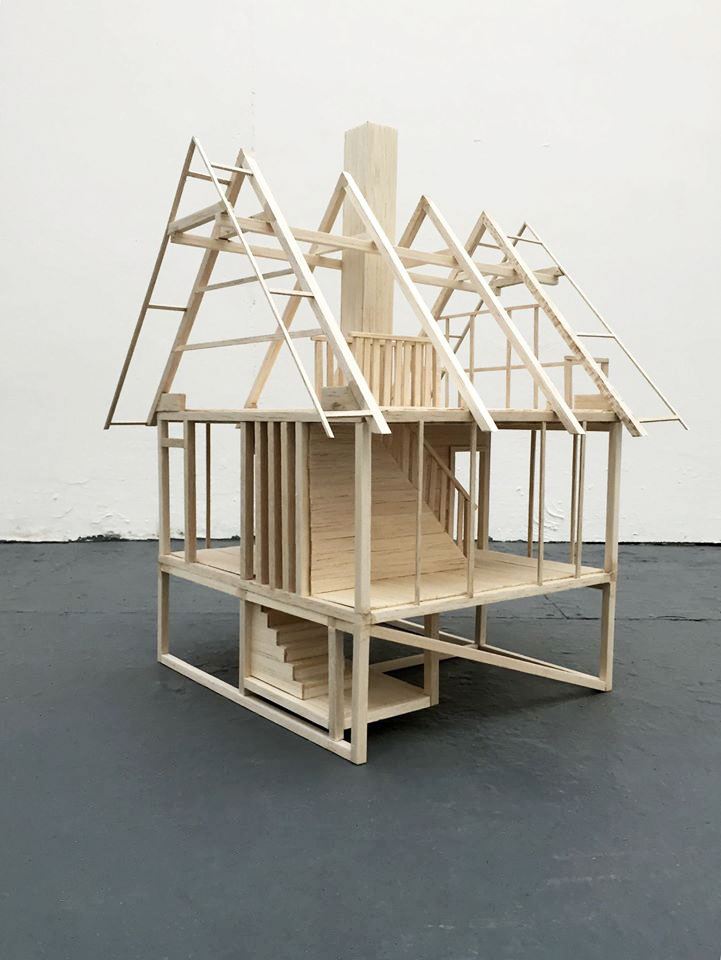
I have begun a process of interpretation. The languages of art, architecture and thinking inform this process. Communication requires a community; a constantly shifting terrain of speakers, listeners and interpreters. I ask myself a question: How do I effectively reimagine Wittgenstein’s hut?
Certainly I can draw on a number of archive images that have survived from the 20s and 30s that give some indication as to the general layout of the outside and give a sense of the dimensions of the building and the location of windows, doors, balcony etc.
From visiting the site I have established scale based on the buildings ‘footprint’. From here I have been able to extrapolate architectural drawings and scale models. I have in some way realised the hut through a technical process of survey, architectural plan and construction. However, I am conscious that in this process of re-imagining, I am always translating and interpretating. I am criss-crossing a terrain; laying down and uncovering markers; reading, inscribing and re-inscribing. I produce field notes. I record events. I communicate and interpret and anticipate a community of interpreters. The languages of re-imagination require such communities; different voices and listeners resonating in different ways– the languages of architecture, thinking and place in an ongoing process of translation and interpretation.
Mark Riley, 2016
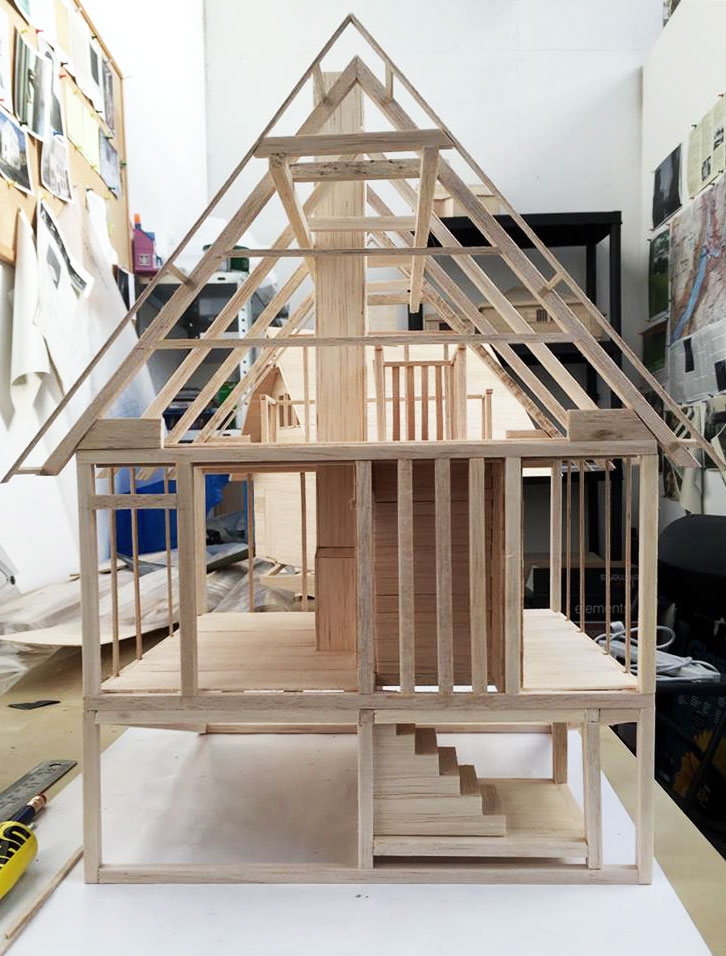
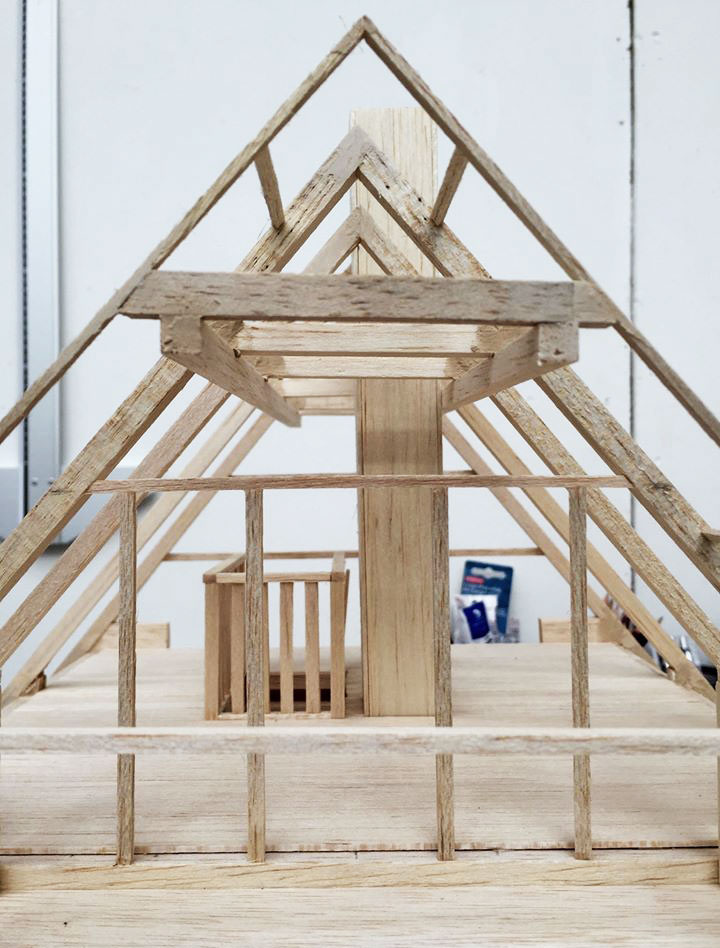
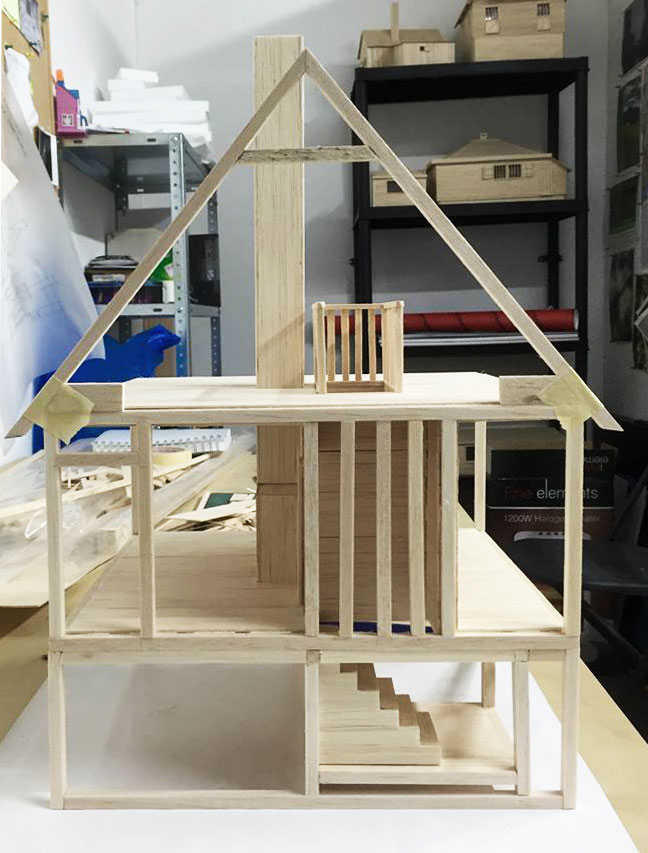
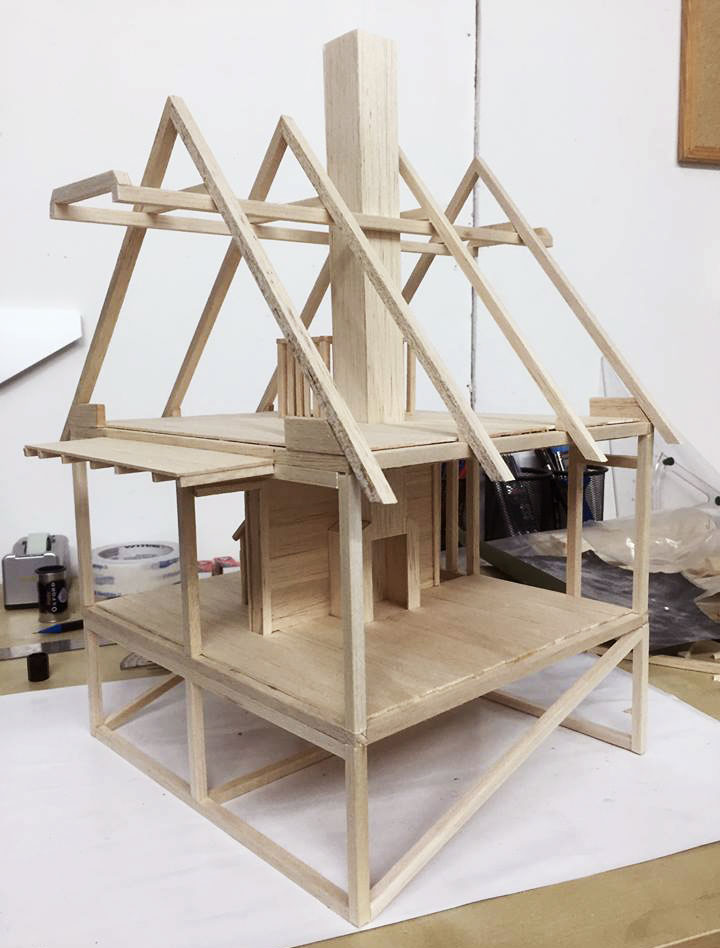
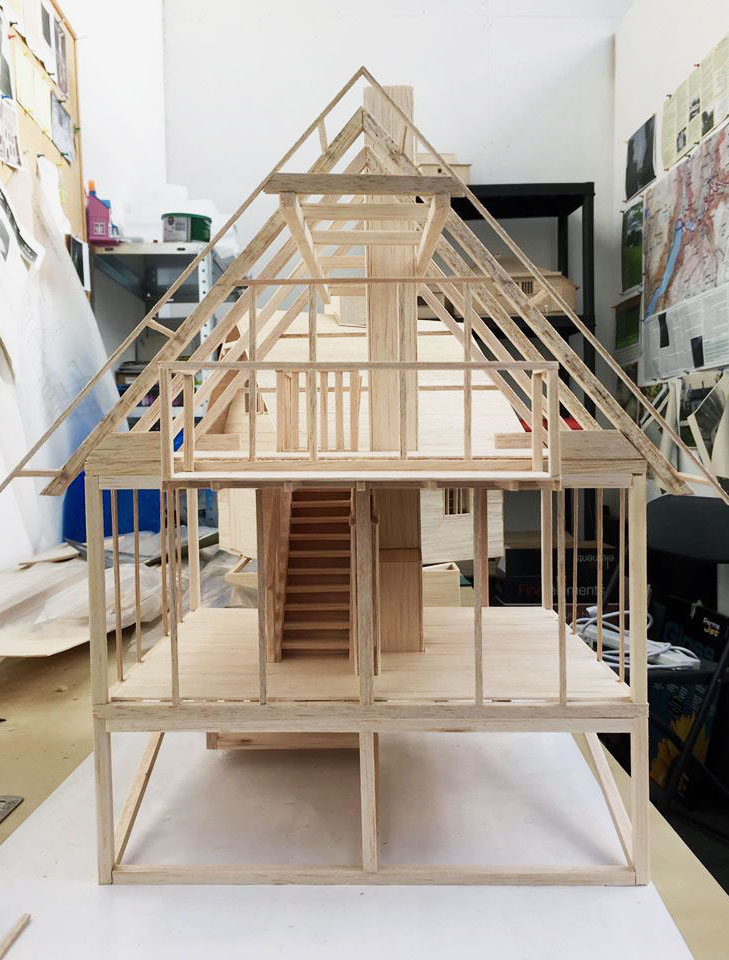
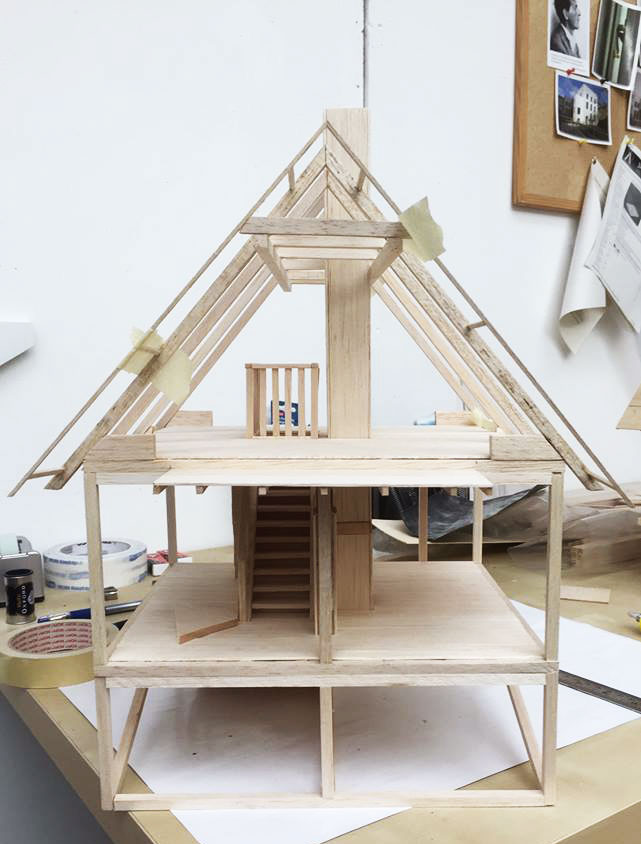
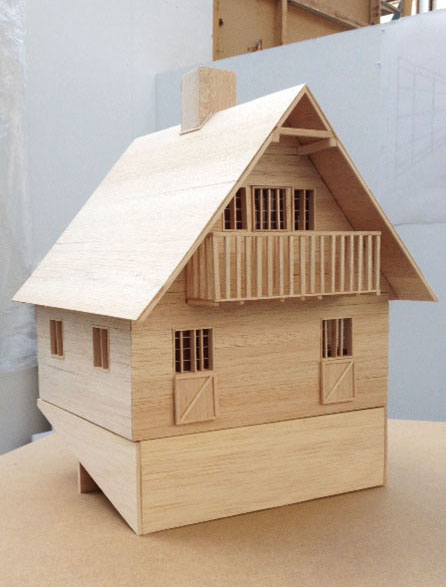
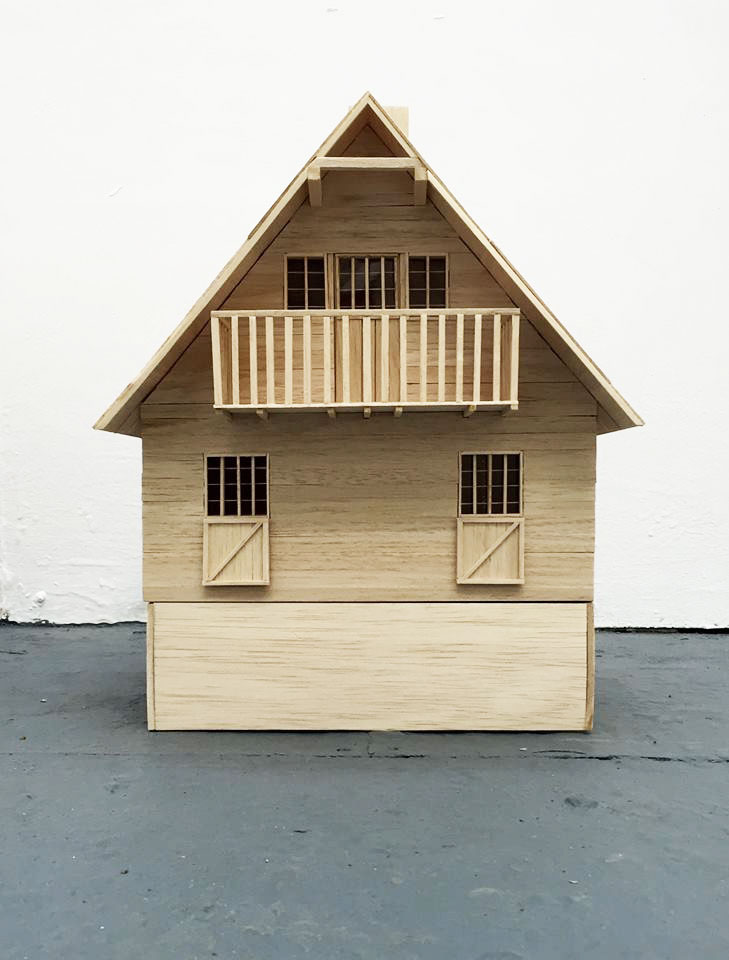
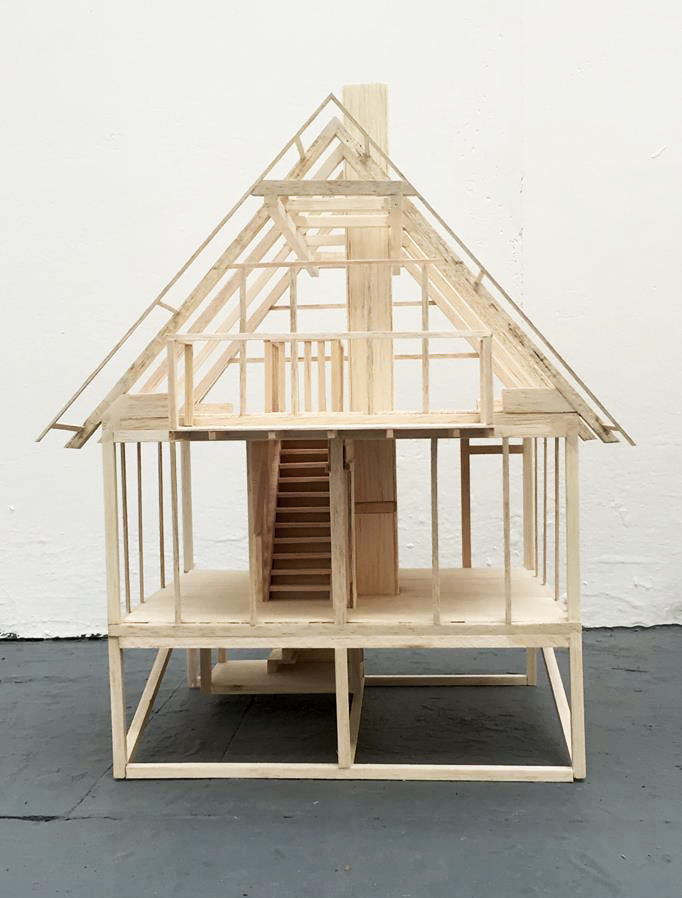
1 In his book, Wittgenstein in Exile, James C. Klagge comments ‘...Wittgenstein formed a plan...that he should exile himself and live for some years right away from everyone he knows – say in Norway. That he should live entirely alone and by himself– a hermit’s life– and do nothing but work on logic’ (Klagge, 54).
2 My journey to Heidegger’s hut at Todtnauberg forms part of a parallel project begun in 2010. The first visit in the summer of that year used a very basic contour map of the valley around Todtnauberg in the Black Forest to locate Heidegger’s hut.
3 In the article ‘Wittgenstein’s Utopia’, Dinda L. Gorlée states: ‘Climbing the path up the mountainsides, Wittgenstein must have experienced this feeling of a happy well-being of his inner space; living inside the hut– a simple ‘hermits hut’– gave an outward resting place.The dark rooms overseeing the starry night with a single lamp glowing in the windows making for a life in solitude, full of dreams, anxieties and realities. This was Wittgenstein’s good space’ (Gorlée, 10-11).
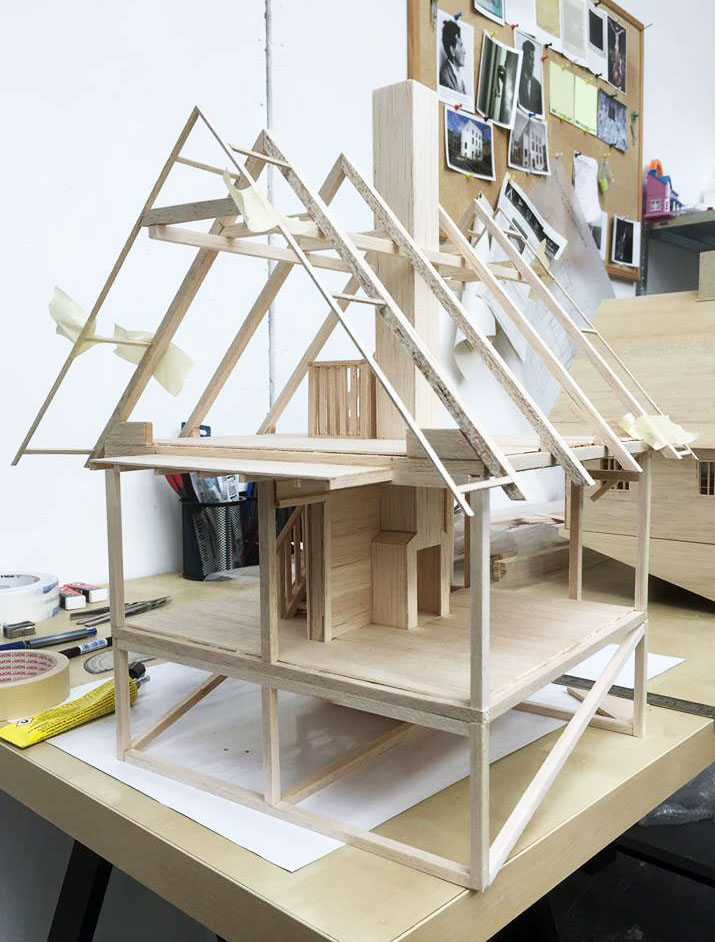
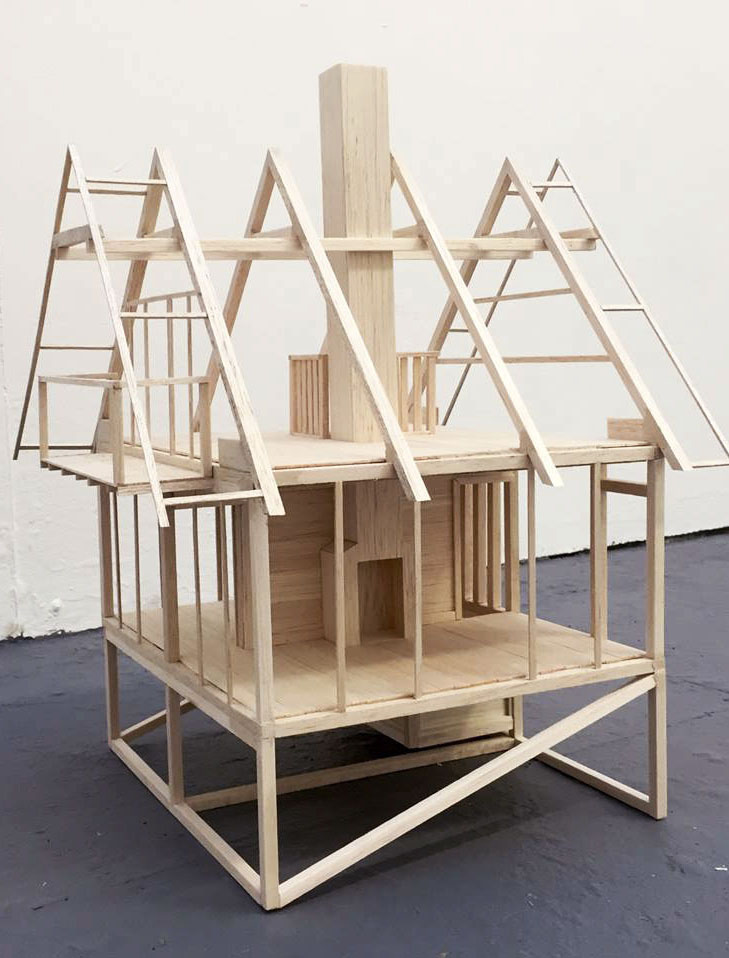
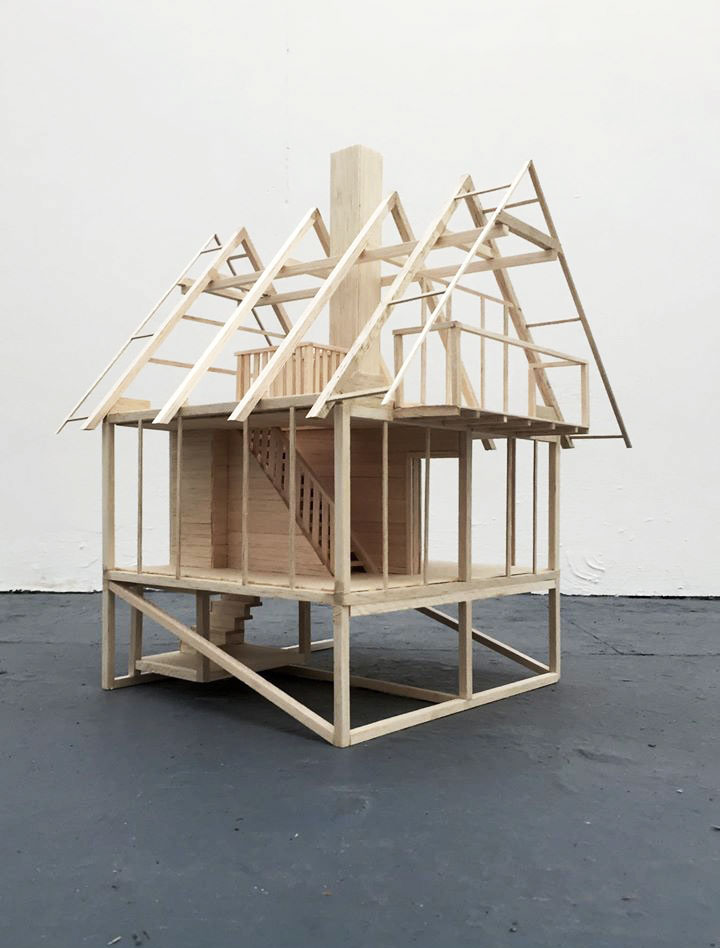
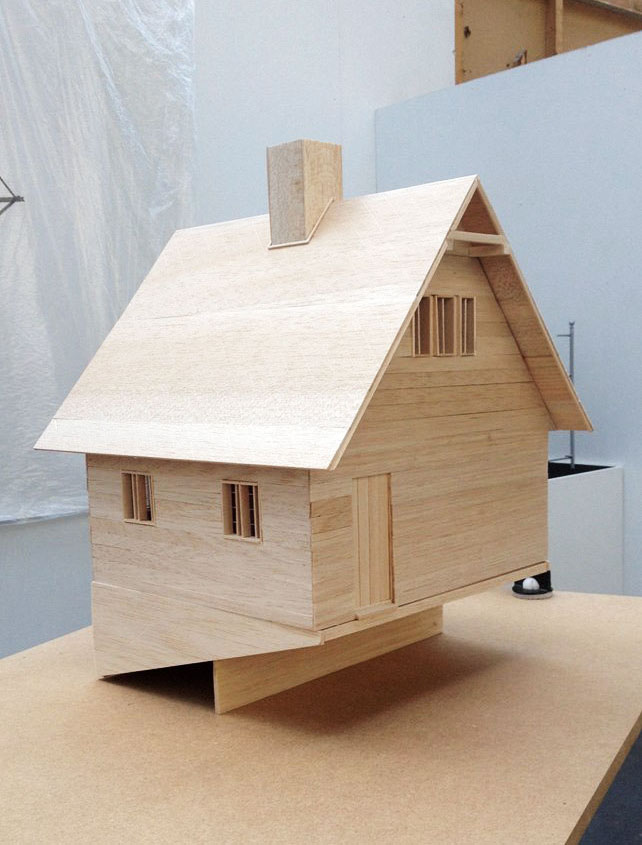
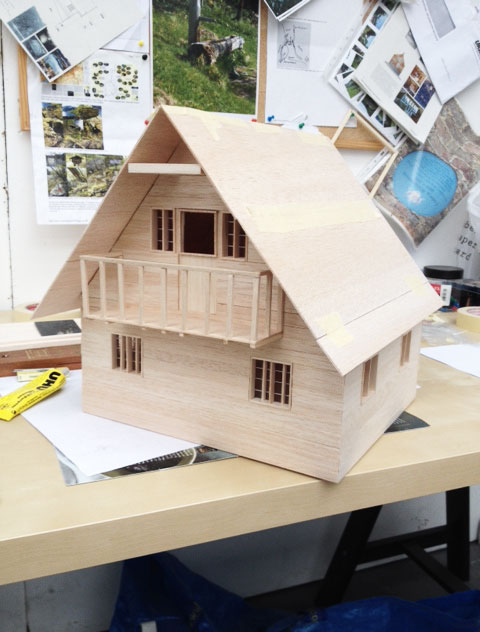
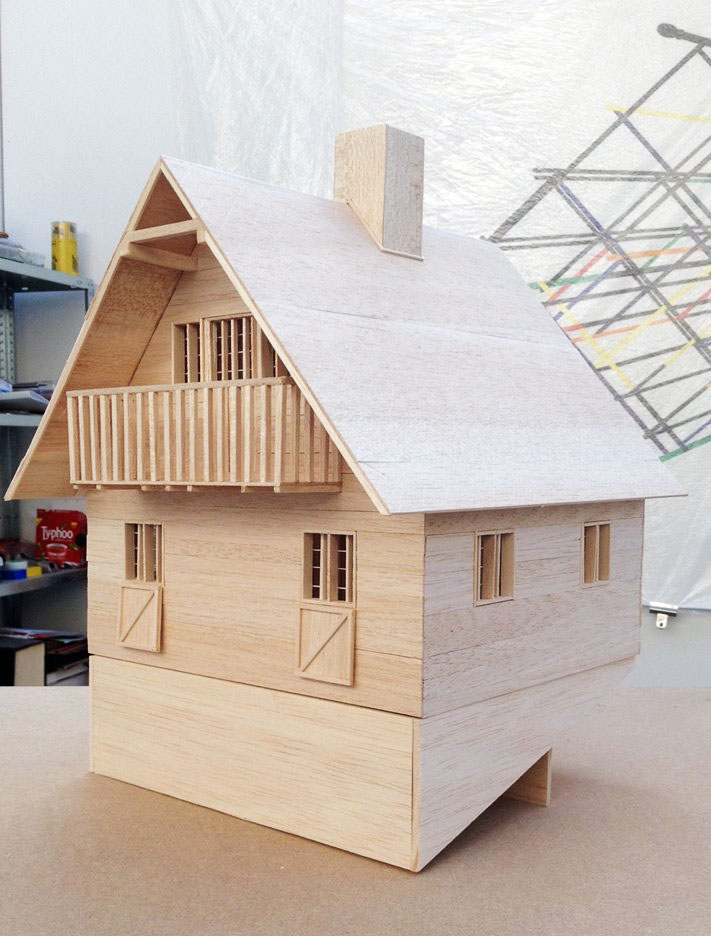
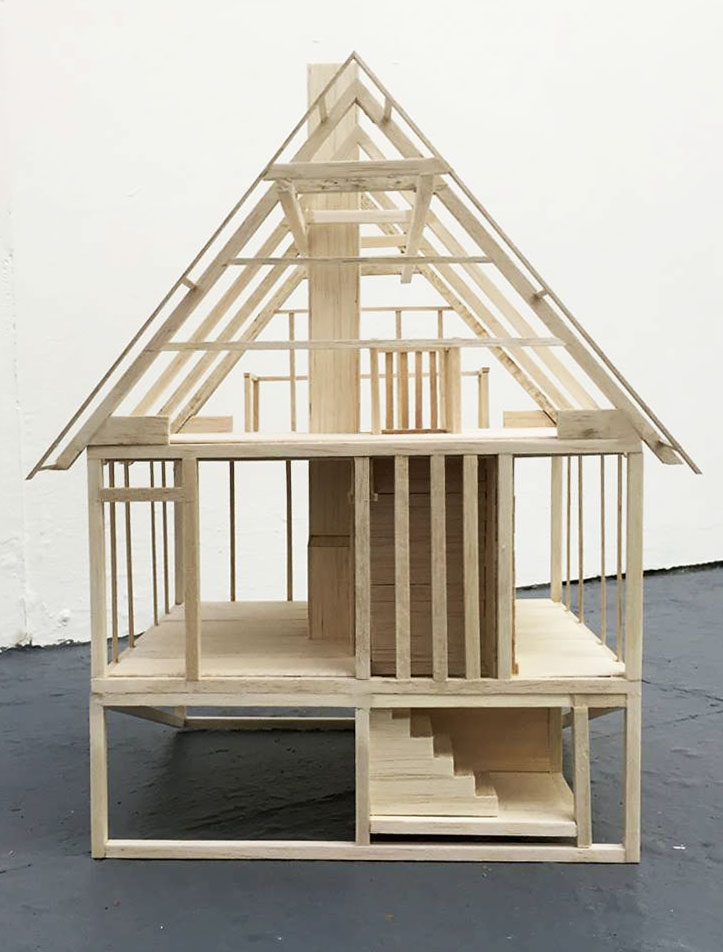
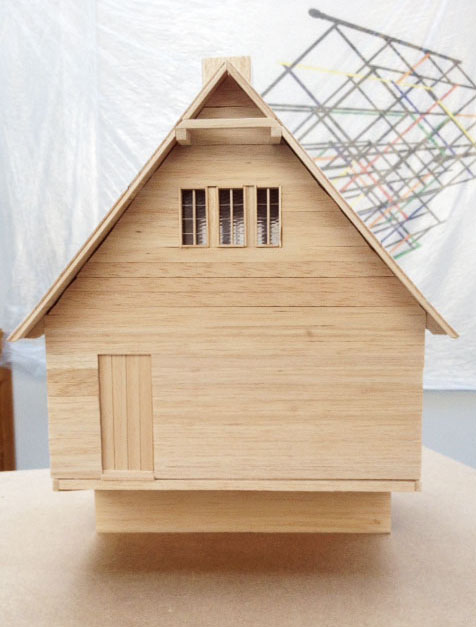
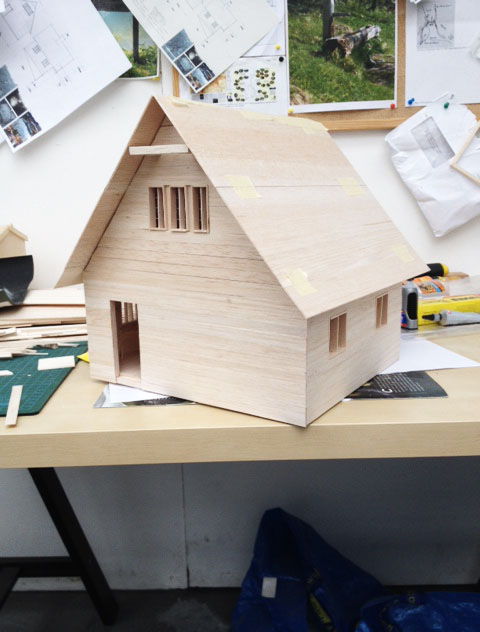
Chamberlain, Lesley. ‘The Philosopher’s Home from Home’. In Standpoint: October, 2011
Estep, Jan. ‘Showing the way out of the Fly Bottle: Searching for Wittgenstein in Norway’. In Cultural Geographies 15, 2: Sage 2008
Gorlée, Dinda L. ‘Wittgenstein’s Utopia’. In American Book Review, Vol 29 number 6 Sept/Oct 2008
Klagge, James C. Wittgenstein in Exile. Cambridge MA: MIT Press 2011
Larsen, Rolf, Kjell S. Johannessen & Knut Olau Amas (eds). Wittgenstein in Norway. Oslo Norway: Solum Forlag Press 1994
McFarlane, Robert. Old Ways: a Journey on Foot. London UK: Hamish Hamilton 2012
Monk, Ray. Wittgenstein: The Duty of Genius. London UK: Vintage 1991
Paden, Roger. Mysticism and Architecture: Wittgenstein and the Meaning of the Palais Stonborough. Lanham, MD: Lexington Books 2007
Oxaal, Ivar. On the Trail to Wittgenstein’s Hut; the Historical Background of the Tractatus Logico-Philosophicus. New Brunswick NJ: Transaction Press 2011
Tilley, Christopher. A Phenomenology of Landscape. Oxford UK: Berg 1997
Wittgenstein, Ludwig. Lecture on the Foundations of Mathematics Cambridge 1939 (ed) Cora Diamond. Chicago IL: University Of Chicago Press 1989
Wittgenstein, Ludwig. Philosophical Investigations. (eds) Peter Hacker & Joachim Schulte. Oxford UK: Blackwell 2009
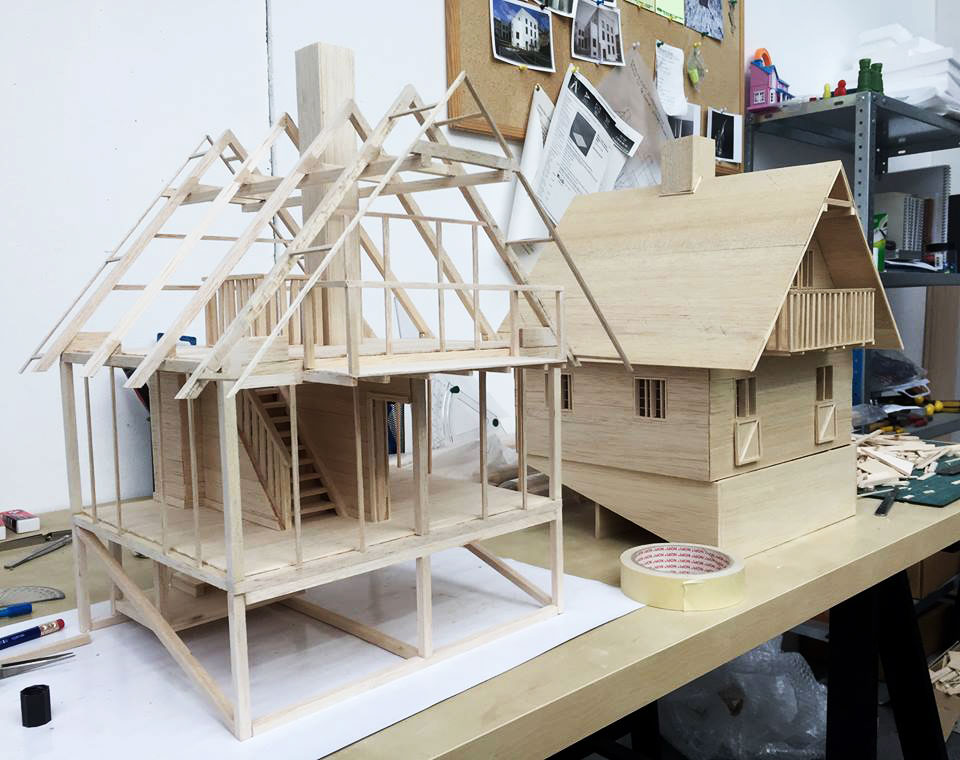
This website is under construction. Register and get notified when it's launched.
